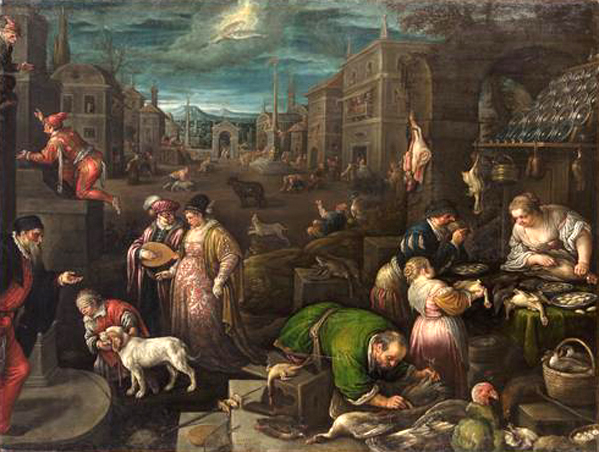
Public Domain (via Wikimedia Commons)
February is the second month on the Gregorian and Julian calendars. With 28 days (except in leap years when there are 29), it is the shortest month of the year. On the old Roman calendar, the year ended in December, and the new year started in March. The name is derived from Februarius, a purification ritual that was held around 15 February on the old Roman lunar calendar. While in the northern hemisphere February is still winter heading towards spring, in the southern seasons are switched so they are heading towards autumn.
With shorter number of days, it is the one month that can pass without a full moon (it happened in 2018). There are many fascinating names used during the month such as Snow Moon to indicate snow is on the ground. Some Native American tribes call it the Hunger Moon due to limited food sources during winter.
February is considered the snowiest month of winter, though that can of course vary by the year. 2 February has been set aside (for reasons far longer than be put here) as a day for weather forecasting by various animals. The most famous is of course Punxsutawney Phil and if the groundhog sees his shadow then six weeks more of winter is expected. He is rated by the U.S. National Oceanic and Atmospheric Administration (NOAA) as being accurate 40% of the time. A lot of people trek to see the groundhog in Punxsutawney, Pennsylvania so it has become quite an event. The whole idea comes from German settlers who back in Germany used badgers for the same purpose. Lacking badgers here, groundhogs were used and so the whole thing mushroomed into what it is today.
There is also a religious connection to 2 February. In most Christian churches, 2 February is celebrated as either Candlemas (the old name) or Presentation of the Lord. The faithful will bring candles to be blessed to be used during winter (and beyond as needed). And then the day is celebrated as also when the infant Jesus is brought to the temple in Jerusalem to be presented in accordance with the law of Moses. There Simeon, a prophet who had been told he would see the promised messiah before he died, took the infant into his arms and blessed him:
Now thou dost dismiss thy servant, O Lord, according to thy word in peace; Because my eyes have seen thy salvation, Which thou hast prepared before the face of all peoples: A light to the revelation of the Gentiles, and the glory of thy people Israel. And his father and mother were wondering at those things which were spoken concerning him. And Simeon blessed them, and said to Mary his mother: Behold this child is set for the fall, and for the resurrection of many in Israel, and for a sign which shall be contradicted; And thy own soul a sword shall pierce, that, out of many hearts, thoughts may be revealed. (Luke 2:25-35)
The February flowers are violet (to signify loyalty, faithfulness and watchfulness) and the primrose (to let someone know you cannot be without them). Of course, roses are the unofficial flower since Valentine’s Day on 14 February usually means a lot of roses are purchased for wives and girlfriends.
For More Information
Boeckmann, Catherine. “February Calendar 2025: Holidays, Fun Facts, and Folklore.” Almanac.Com. Last modified January 29, 2025. https://www.almanac.com/content/month-february-holidays-fun-facts-folklore.
“The Month of February,” https://www.timeanddate.com/calendar/months/february.html.
Contributors to Wikimedia projects, “1911 Encyclopædia Britannica/February,” Wikisource, the Free Online Library, last modified August 14, 2020, https://en.wikisource.org/wiki/1911_Encyclop%C3%A6dia_Britannica/February.
Cecil Adams, “How Come February Has Only 28 Days? – the Straight Dope,” The Straight Dope, last modified July 28, 2020, https://www.straightdope.com/21341610/how-come-february-has-only-28-days.
